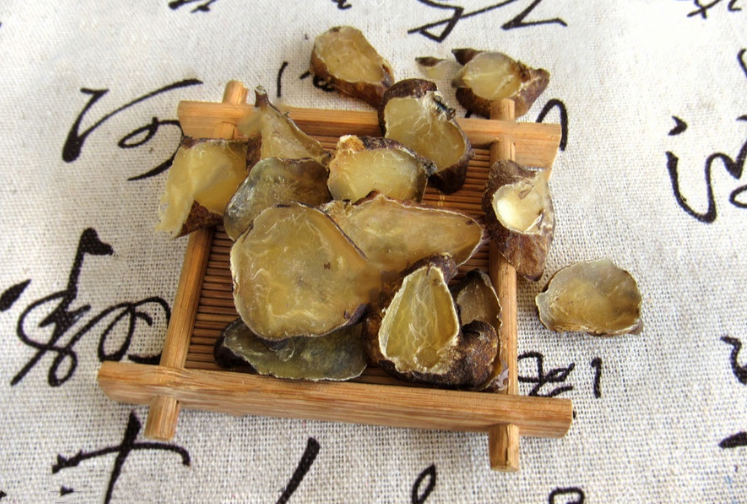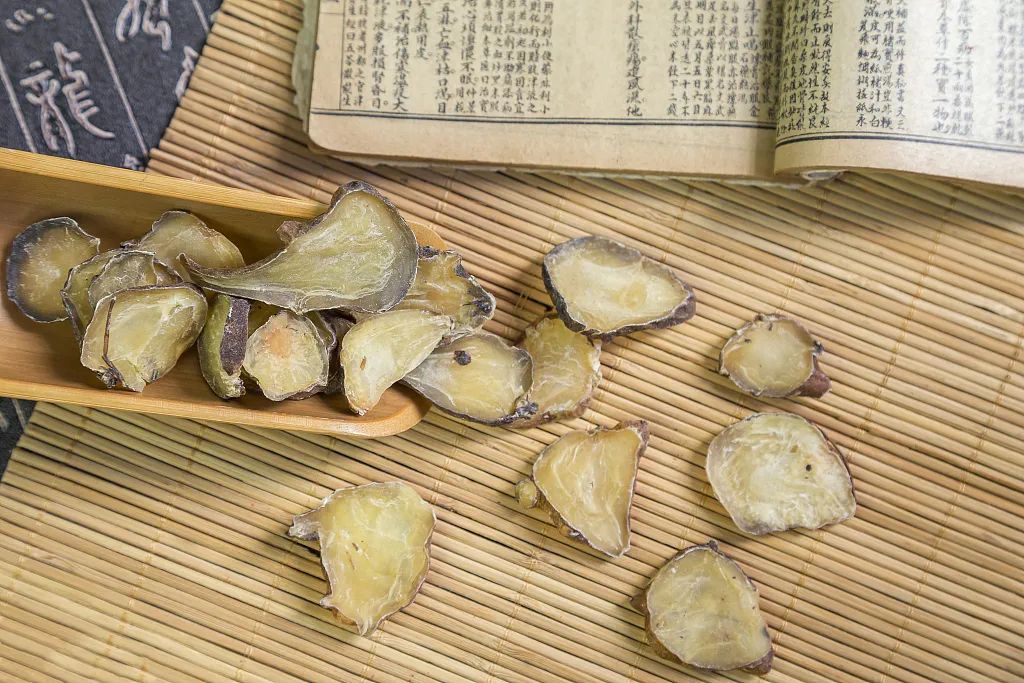

The use of Fu Zi (Aconite) in Traditional Chinese Medicine (TCM) for reviving Yang and rescuing from collapse is well-known. Different processing methods yield various forms such as Yan Fu Zi (Salted Aconite), Hei Shun Pian (Black Shun Slices), Bai Fu Pian (White Aconite Slices), Pao Fu Pian (Processed Aconite Slices), and Dan Fu Pian (Mild Aconite Slices). Do you know how to distinguish them? How should Fu Zi be applied clinically? Are you aware?



 Discussion on the Usage and Dosage of Fu Zi
Discussion on the Usage and Dosage of Fu Zi


Fu Zi is a processed product of the tuberous root of the plant Wu Tou (Aconitum), which is a perennial herb found in mountainous grasslands or shrub areas, distributed in southern Liaoning, Henan, Shaanxi, Gansu, Shandong, and Jiangsu. It is mainly cultivated in Sichuan, harvested from late June to early August, removing the main root, fibrous roots, and soil, commonly referred to as “mud Fu Zi”. The processed forms are as follows:
1. Salted Fu Zi: Select large, uniform mud Fu Zi, wash it, soak it in a solution of edible gall water overnight, then add salt and continue soaking, taking it out daily to dry in the sun, gradually extending the drying time until a large amount of crystalline salt (salt frost) appears on the surface, and the texture hardens, commonly known as “Salted Fu Zi”.
2. Black Shun Slices: Take mud Fu Zi, wash it according to size, soak it in a solution of edible gall water for several days, boil it with the soaking liquid until thoroughly cooked, remove, rinse with water, cut into approximately 0.5 cm thick slices, soak in water, dye the slices with a coloring solution to a dark tea color, steam until an oily surface and gloss appear, then dry until semi-dry or continue drying, commonly known as “Black Shun Slices”.
3. White Aconite Slices: Select uniform-sized mud Fu Zi, wash it, soak it in a solution of edible gall water for several days, boil it with the soaking liquid until thoroughly cooked, remove, peel off the outer skin, cut into approximately 0.3 cm thick slices, soak in water, steam until thoroughly cooked, dry until semi-dry, and then dry after sulfur fumigation, commonly known as “White Aconite Slices”.
4. Processed Aconite Slices: Take clean river sand, place it in a frying container, heat with a strong fire until flexible, add clean Aconite slices, stir-fry continuously until they puff up and slightly change color, remove, sift out the sand, and cool.
5. Mild Aconite Slices: Take clean salted Fu Zi, soak in clean water, changing the water 2-3 times daily until the salt is completely removed, then boil with licorice and black beans until thoroughly cooked, cut open and taste for no numbness on the tongue, remove the licorice and black beans, cut into thin slices, dry, and sift out the fragments. For every 100 kg of salted Fu Zi, use 5 kg of licorice and 10 kg of black beans.
1Usage of Fu Zi
Having understood the various commonly used forms of Fu Zi in today’s medical market, let us discuss the usage and dosage of Fu Zi.
Generally, Fu Zi is toxic; the longer the cooking time, the safer it may be. However, the toxicity of Chinese herbs can sometimes also be a therapeutic effect. As stated in the “Zhou Li – Tian Guan”, “The physician manages the medical orders, gathering toxic medicines for medical affairs”.
Clinically, Fu Zi is not always better with longer cooking times. For example, in the Si Ni Tang (Four Reversal Decoction) from the “Shang Han Lun” (Treatise on Cold Damage), one piece of Fu Zi is used raw, boiled with three liters of water to yield one liter and two cups. This indicates that the cooking time for Fu Zi in the “Shang Han Lun” is not very long.
From the cooking method, it can be seen that Zhang Zhongjing did not emphasize prolonged cooking for the Si Ni Tang. In the Gan Cao Gan Jiang Tang (Licorice and Dried Ginger Decoction), three liters of water is boiled to yield one liter and five cups, while the Si Ni Tang is boiled with three liters of water to yield one liter and two cups. This comparison shows that the cooking time for Si Ni Tang is not significantly longer than that of Gan Cao Gan Jiang Tang. This indicates that with accurate pattern differentiation and corresponding formulas, small doses of Fu Zi may not need to be pre-cooked. Currently, the forms used in hospitals are mostly Hei Shun Pian or Dan Fu Pian, which are already processed and have significantly reduced toxicity. However, if a larger dose of Fu Zi is used, it is still recommended to pre-cook to ensure clinical safety.
2Dosage of Fu Zi
Next, let us discuss the dosage of Fu Zi.
I do not advocate the large-scale use of Fu Zi for common diseases unless in emergencies to revive Yang and rescue from collapse; otherwise, one should not blindly use large doses to warm Yang, such as 100g or 200g of Fu Zi.
As we learn from the “Huang Di Nei Jing” (Yellow Emperor’s Inner Canon), “Small fire generates Qi, strong fire consumes Qi”, meaning that small doses of warming Yang can replenish Yang Qi, while large doses, although they may yield immediate benefits, will inevitably deplete the body’s Yang Qi over time. Once Fu Zi is stopped, Yang Qi will be even more deficient. It is like a child’s growth; if parents do everything for them (large doses of warming Yang), they will inevitably achieve nothing when they grow up. However, if they are slightly supported when they go astray (small doses of warming Yang), they can achieve great things in the future.
Moreover, every medication has its safe dosage range, with effective doses and toxic doses. Once one understands Chinese culture, it becomes clear that TCM often treats diseases by adapting to circumstances, using four taels to move a thousand pounds. In urgent and critical conditions, one may initially use a heavier dose to revive Yang, but once Yang Qi is restored, one should not continue to use large doses for warming Yang but should transition to small doses of nourishing formulas to fully reap the benefits.

 Clinical Experience with Fu Zi
Clinical Experience with Fu Zi


Now, let me share my experience with the usage and dosage of Fu Zi in clinical practice.
1. Dosage: In my unit’s pharmacy, we use Hei Shun Pian, and my common dosage is 5-20g. In rare cases of severe Yang deficiency, I may use up to 30g, such as in some acute left heart failure patients, where 20-30g has shown excellent efficacy.
2. Cooking Time: I usually prescribe that patients boil vigorously, then simmer on low heat for over an hour, so I rarely require pre-cooking for Fu Zi in my prescriptions.
3. Indications for Fu Zi: Cold extremities, joint pain, undigested stools, and overall body weakness.
4. Combinations with Fu Zi: For exterior Yang deficiency, Fu Zi is combined with Ma Huang (Ephedra); for interior Yang deficiency, Fu Zi is combined with Gan Jiang (Dried Ginger).
Click the keywords below to explore:
| Disease Inquiry | ||
|---|---|---|
| Head and Face | ||
| Cough | Fever | Sore Throat |
| Rhinitis | Pharyngitis | Headache and Dizziness |
| Dental Issues | Bad Breath | Oral Ulcers |
| Common Cold | Eye Diseases | Thyroid Issues |
| Insomnia | Tinnitus | Snoring |
| White Hair | Hair Loss | Dandruff |
| Acne | Bitter Mouth | Freckle Removal |
| Common Diseases | ||
| Constipation | Eczema | Skin Diseases |
| Hiccups | Stones | Diarrhea |
| Stomach Issues | Acid Reflux | Fatty Liver |
| Liver Diseases | Abdominal Distension | Gastritis |
| Foot Fungus | Body Odor | Hand Peeling |
| Hemorrhoids | Night Sweats | Nodes |
| Stiff Neck | Asthma | WartsSkin Tags |
| Cancer | Depression | Heel Pain |
| Heat Symptoms | Fungal Nail Infection/Paronychia | |
| Geriatric Diseases | ||
| Hypertension | Hyperlipidemia | Hyperglycemia |
| Gout | Stroke | Cardiovascular |
| Brain Health | Kidney Deficiency | Alzheimer’s Disease |
| Back Pain | Leg Pain | Knee Pain |
| Lower Back Pain | Disc Issues | Cervical Pain |
| Rheumatism | Cramps | Varicose Veins |
| Aging | Shoulder Pain | Age Spots |
| Numbness in Hands | Numbness in Feet | Osteoporosis |
| Men and Women | ||
| Gynecology | Breast Cancer | Breast Hyperplasia |
| Dysmenorrhea | HPV | Itching |
| Andrology | Kidney Tonification | Erectile Dysfunction and Premature Ejaculation |
| Obesity | Thinness | Lower Abdomen |
| Chest Issues | Beauty | Cold Hands and Feet |
| Smoking Cessation | Hangover Relief | Frequent Urination and Urgency |
| Health Preservation | Menopause | Menstrual Irregularities |
| Regulation | ||
| Qi Tonification | Blood Tonification | Blood Vessel Nourishment |
| Spleen Strengthening | Dampness | Liver Nourishment |
| Yin Deficiency | Yang Deficiency | Heat Above and Cold Below |
| Lung Nourishment | Calcium Supplementation | Chinese Patent Medicines |
| Health Check | Hand Diagnosis | Facial and Tongue Diagnosis |
| Minor Illnesses and Minor Formulas | Kidney Deficiency |
Meridian Points |
Note: The content in the table will be continuously updated!

